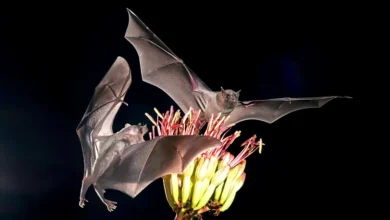Scientists chart the stories of young stars — from being born to moving out

Scientists are building a better account of the lives of adolescent stars, starting from their births in collapsing clouds of cosmic gas and dust to the time they “fly the nest” and drift away from other young stars in their original clusters.
Studying these stellar timelines will help scientists better determine the ages of stars — and because age is a fundamental parameter in astrophysics, it can ultimately offer astronomers a clearer picture of how star systems, and even entire galaxies, evolve.
The team developed its new method of age determination by harnessing two of the most powerful and accurate techniques already employed by astronomers to study stars. They found that one , known as isochronous measurement , can be used to determine precisely when stars are born. The other, known as dynamical tracking , provides information about when stars leave their cosmic nests.
Synchronizing these two differing cosmic clocks revealed to the team that stars snuggle up to their stellar siblings for around 5.5 million years after birth.
“Our work paves the way for future research into star formation and provides a clearer picture of how stars and star clusters evolve,” Núria Miret-Roig, team leader and an astrophysicist at the University of Vienna, said in a statement. “This is an important step in our endeavor to understand the formation of the Milky Way and other galaxies.”
Stellar stopwatches
Thus far, the best age approximations scientists have for stars apply to stellar bodies found in star clusters, which are most often of the same age because they formed from the same collapsing cloud of dust and gas.
Miret-Roig and the team applied isochronous measurement and dynamical tracking to six relatively close star clusters up to 490 million light years away; these clusters are also relatively young at around just 50 million years old. They found isochronous measurement gave an age 5.5 million years older than dynamic backtracking.
“This indicates that the two measurement methods measure different things,” Miret-Roig explained. The team theorizes this is because the isochronous measurement clock starts ticking when stars are born, while the dynamical backtracking clock only starts running when a star cluster expands and individual stars start to break free of their siblings as well as the natal gas and dust clouds they were born in.
“This age difference between the two methods represents a new and much-needed tool to quantify the earliest stages in a star’s life,” research co-author and professor at the University of Vienna scientist João Alves said. “Specifically, we can use it to measure how long the baby stars take before they leave their nest.”
The synchronization of these two cosmic clocks and the discovery that the embedded phase lasts around 5.5 million years was made possible with data from the European Space Agency space mission Gaia, which is currently building an extraordinarily precise three-dimensional map of more than a billion stars throughout our Milky Way galaxy. The results were also aided by radial velocity measurements of stars from the ground-based APOGEE catalog.
“This finding has significant implications for our understanding of star formation and stellar evolution, including planet formation and the formation of galaxies, and opens up a new perspective on the chronology of star formation,” Alves said. “For example, the length of the so-called ’embedded phase,’ during which baby stars remain within the parental gas cloud, can be estimated.”
The team’s research was published on Nov. 23 in the journal Nature Astronomy.









